This Fairytale Manor Near Birmingham Wants You to Make Yourself at Home, Literally — "Hospitality Is Joyful When It's Richly Tangible"
Nestled in a 45-acre estate, the Grade II-listed building is the beating heart of Hampton Manor, a diffused luxury stay and Michelin-starred culinary destination where craftsmanship, seasonality, and community thrive
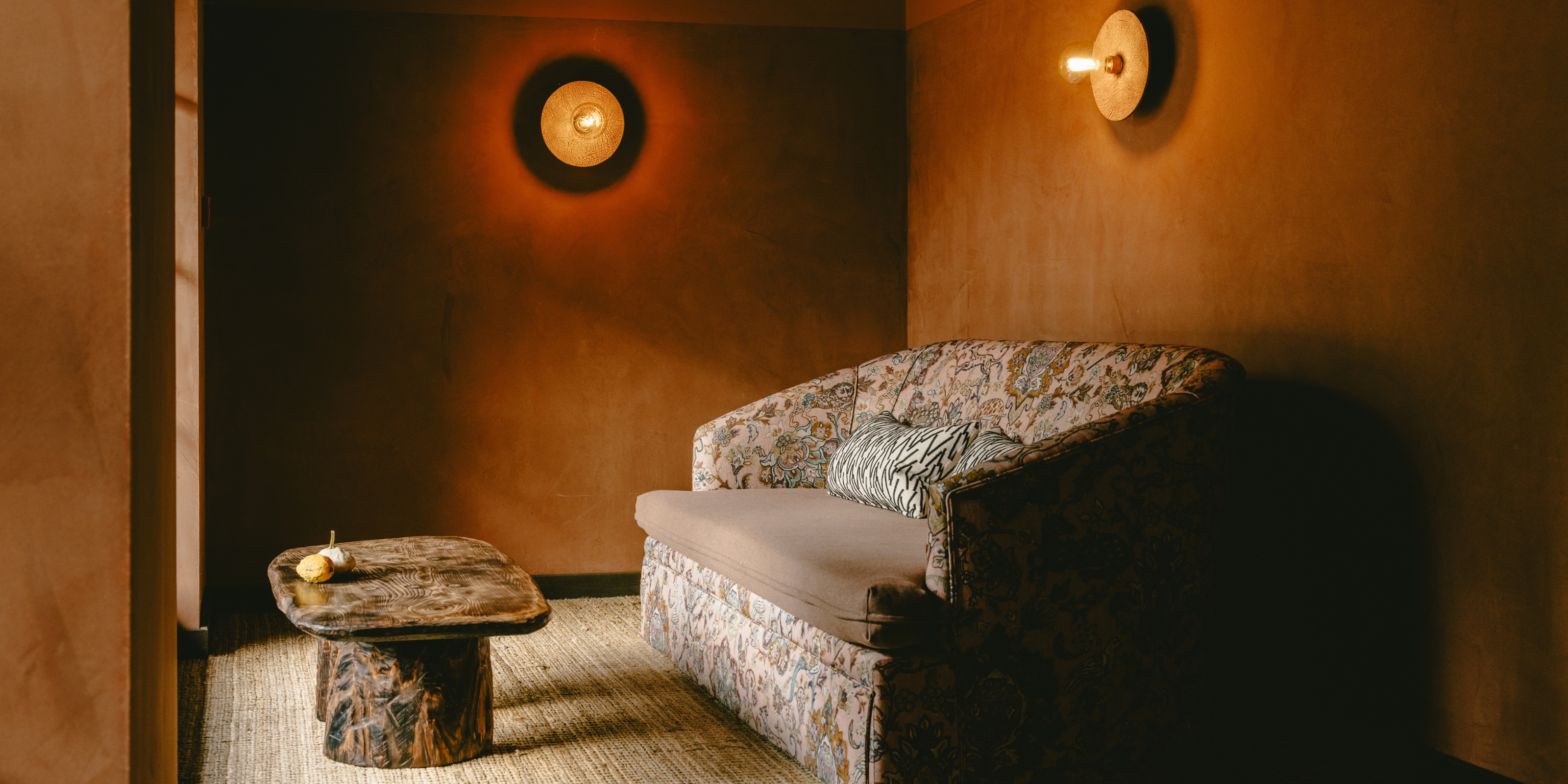

It's past 11 PM when, finished the luscious, creme fraiche-dotted chocolate marquis that wraps up my dinner at Kynd, Hampton Manor's latest restaurant opening, my partner and I make our way back to the hotel's Library Bar. Coming from the packed-with-flavor meal enjoyed at the eatery, where a casual environment defined by copper lighting, distressed brickwork, bold leather accents, and textural wood lets "small farms' brave stories" take center stage in meticulously balanced, smoky seasonal plates, I feel pleasantly full. Blame it on the wine, but filled with warmth, even. When we get to the room, tucked in a ground-floor corner of the destination's beautifully restored 19th-century Manor House, only another couple is sitting on its scalloped, coral-hued sofas, immersed in the colorful mosaic formed by the countless books and records that stack up the nearby shelves. "The bar is closing. Any final orders?", asks the bartender from behind the marble counter, only momentarily disrupting the 1970s atmosphere set by Fleetwood Mac's Rumours, which carries on playing on vinyl in the background. "If not, I'll leave you to it. Feel free to stay for as long as you please."
Located in the countryside village of Solihull, 11 kilometers southeast of Birmingham, in the West Midlands, and a couple of hours away from London by train, Hampton Manor is a five-star luxury hotel named after the Tudor Gothic-style building positioned at its heart, with three individually designed settings offering 24 suites and bedrooms. Once the family residence of Prime Minister Robert Peel's son Frederick, who built it in 1855, it served as a care home for half of the 20th century before being acquired by hoteliers Derrick and Jan Hill in the early Noughties. Part of a 45-acre estate that reveals itself to visitors over a winding lane punctuated by heavy-with-blossom cherry trees, the stay's regal façade doesn't exactly exude nonchalance. Still, the key to Hampton Manor's success, attested by the numerous accommodation and culinary accolades the destination has amassed over the years — including the Michelin Star awarded to its Grace & Savour restaurant and mentions in the Top 50 Boutique Hotels, SquareMeal, and Good Food Guide's Top 5 and 20 Restaurants in the UK lists, respectively — lies in its owners' desire to keep it real.
"We often talk about 'gravel drive' syndrome at the Manor," Creative Director and co-founder Fjona Hill, who relaunched Hampton Manor as a gastrotourism hotspot alongside her husband James in 2019, tells me. "When you come up a sweeping drive into a grand house, people can feel like they have to be on their best behavior. But that's no way to relax and have fun: true hospitality is joyful when it's richly tangible," she adds. As farm stays in the UK grow increasingly popular with their estate-to-table menus and wellness-aiding sojourns, this West Midlands retreat is carving itself a spot of its own in the industry "as a nature-inspired antidote to today's age of convenience".
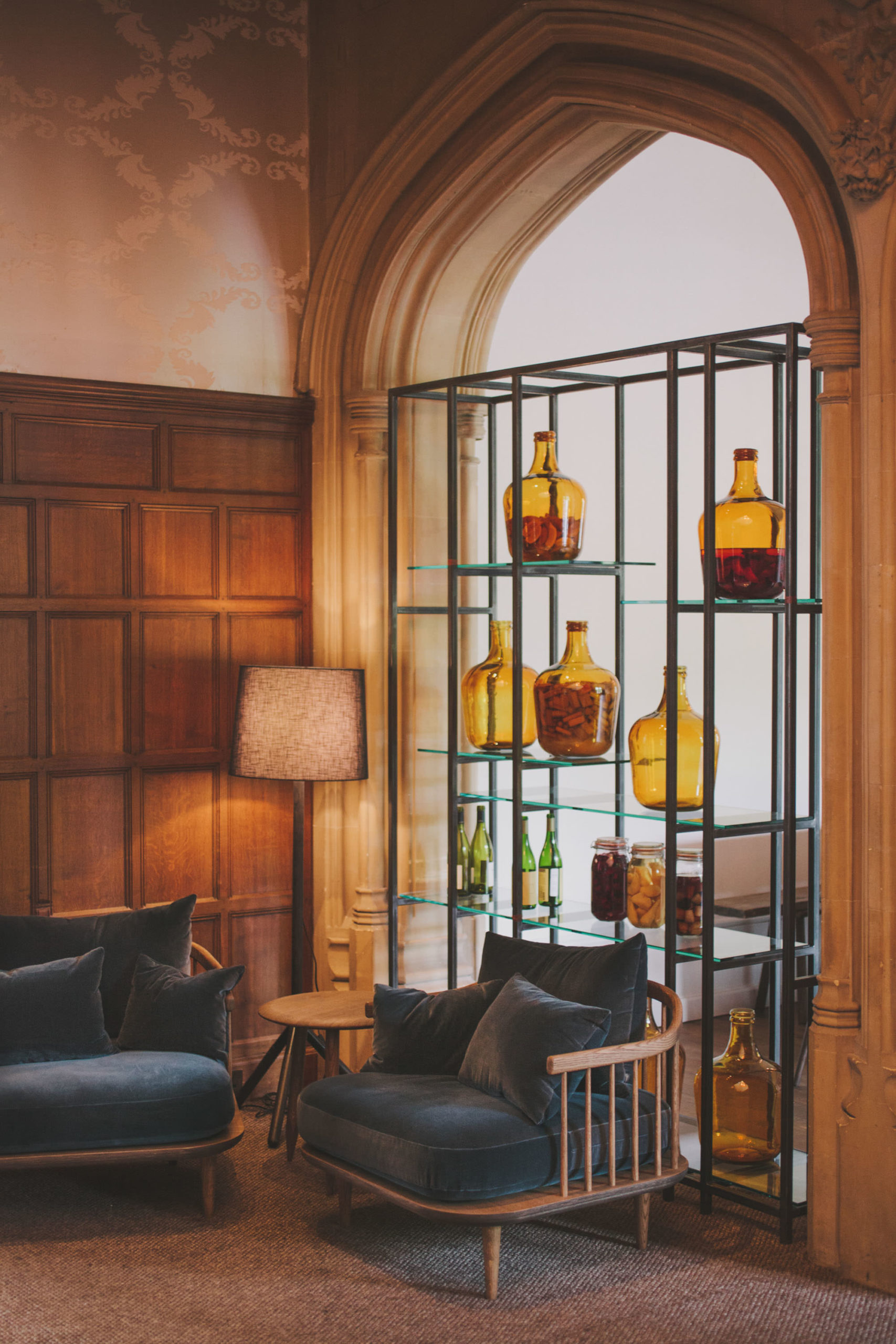
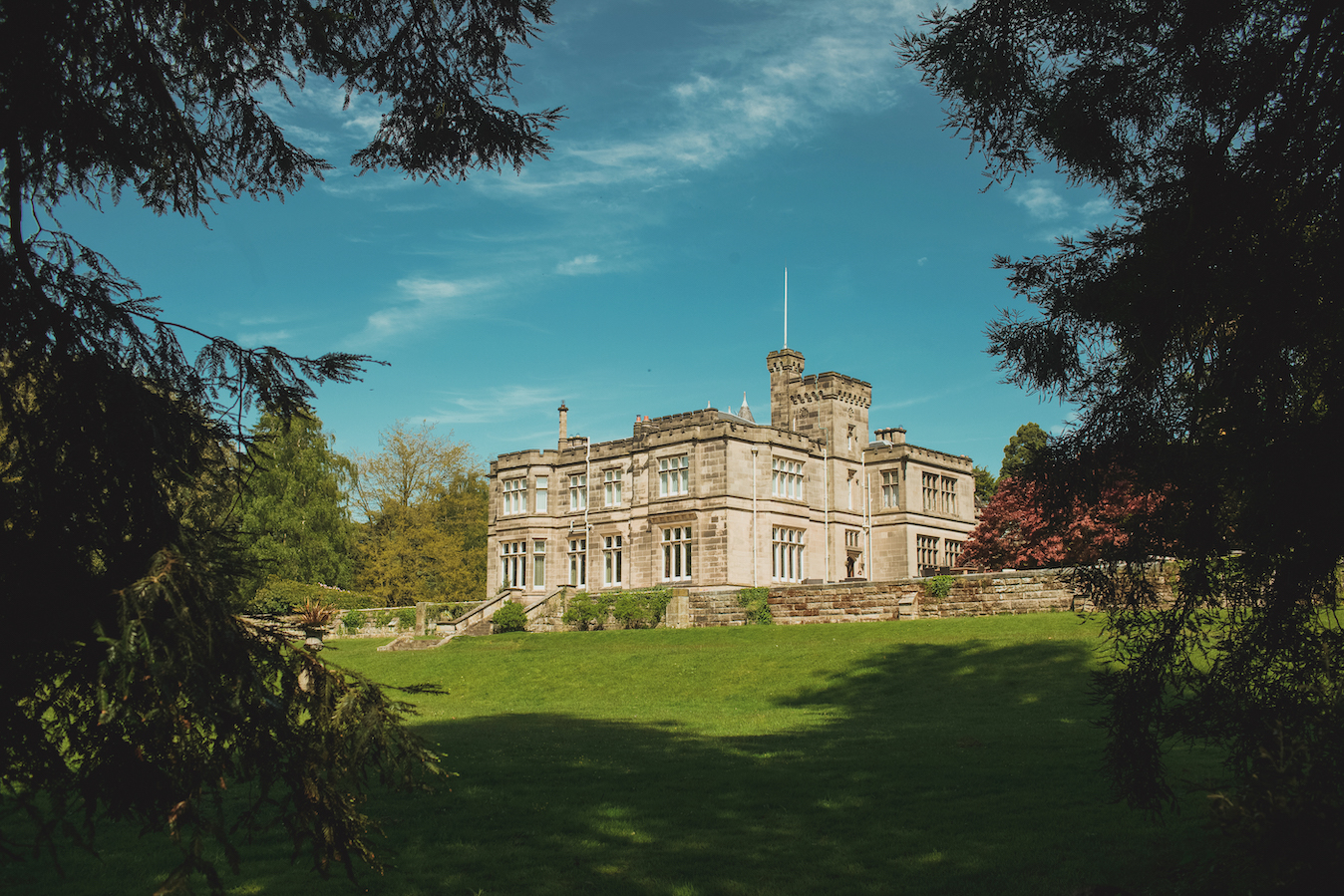
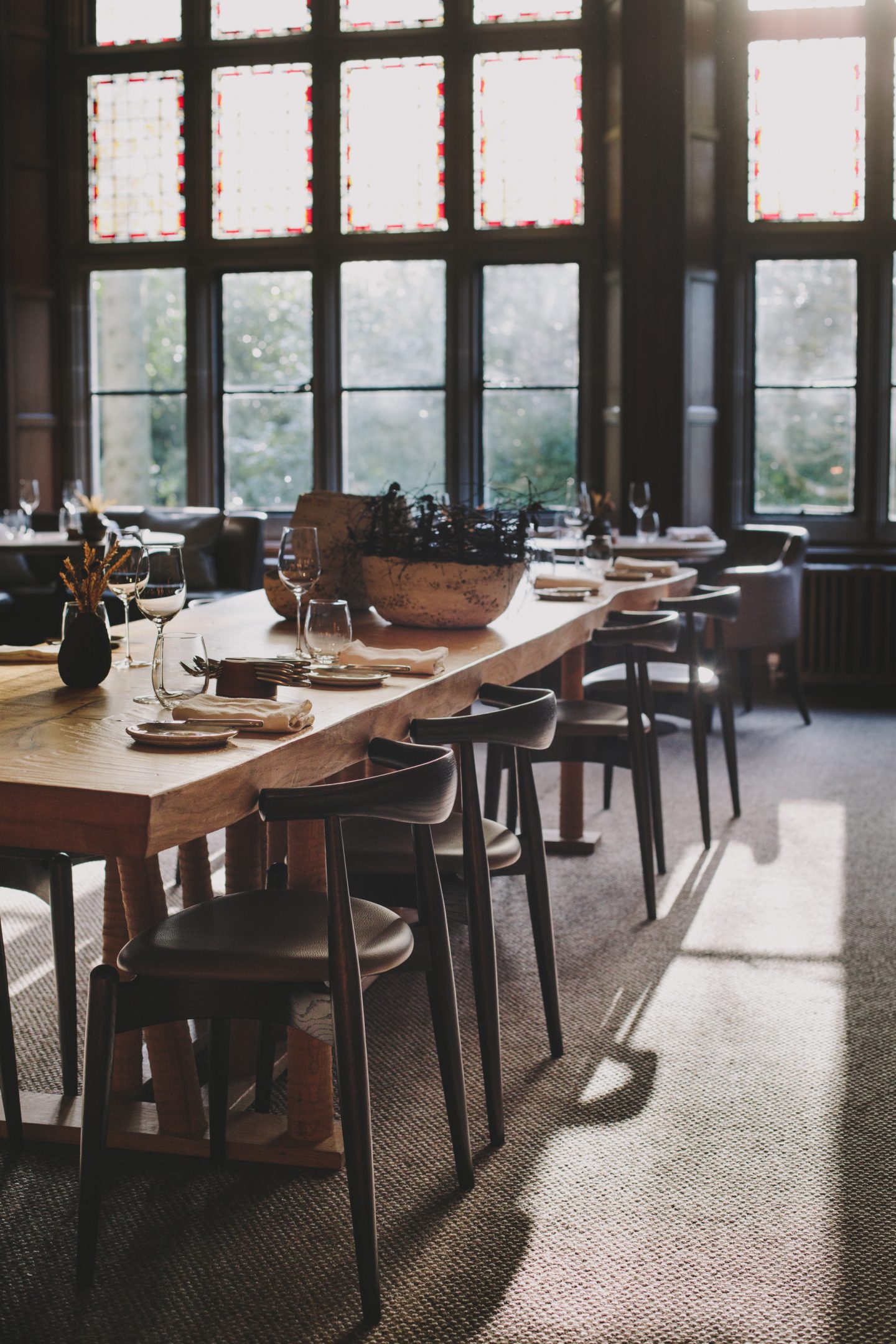
As Fjona's first major venture into modern interior design, landing on a visual language that could pay homage to the location's past while laying the foundations for its future required some trial and error. Eventually, she learned that "design is best rooted in a sense of place"; that's what allows it to transcend fleeting trends. Much like a real home, "the spaces evolved gradually rather than in one fit out," explains the creative director, who drew on multiple eras to achieve a result that reflected her and her husband's artful vision for the hotel. From the moment visitors are greeted at the reception, situated in the front wing of the stay's timeless building, this is immediately palpable, with the Manor House's beautifully preserved architecture guiding them along a series of ornate stone arches interspersed with smooth wood paneling, bucolic wallpapers, plush fabrics, and sculptural, sleek contemporary accents.
"Historic places are a lesson in wonder," Fjona says. "If you look at all the intricate carvings in stone and wood around the house, and imagine that was all done by hand, it's a little breathtaking. In our hurried times, the resurgence of craft speaks of our need for balance. Of our will to rebel against the urgency of the world." To channel that spirit, she looked up to the pioneering work of British textile designer, poet, and artist William Morris and the Birmingham Set, the group of young intellectuals he joined while studying at Oxford University in the 1850s, whose politically engaged pursuit of art, literature, and social reform led to the birth of the Arts and Crafts Movement.
Kicking back against industrialization, they rejected mass production in favor of handcrafted goods built with ancestral manufacturing methods. Their story was instrumental to Hampton Manor. "Whether through food or design, we choose slow, deeply sensory craftsmanship that tells the story of our age, with William Morris prints incorporated [into the hotel's oldest arm] to bring context," Fjona says. "We didn't want a house where you felt you couldn't touch anything. Instead, the pieces we commission to local artisans are created to be experiential — beautiful, but tactile and interactive."
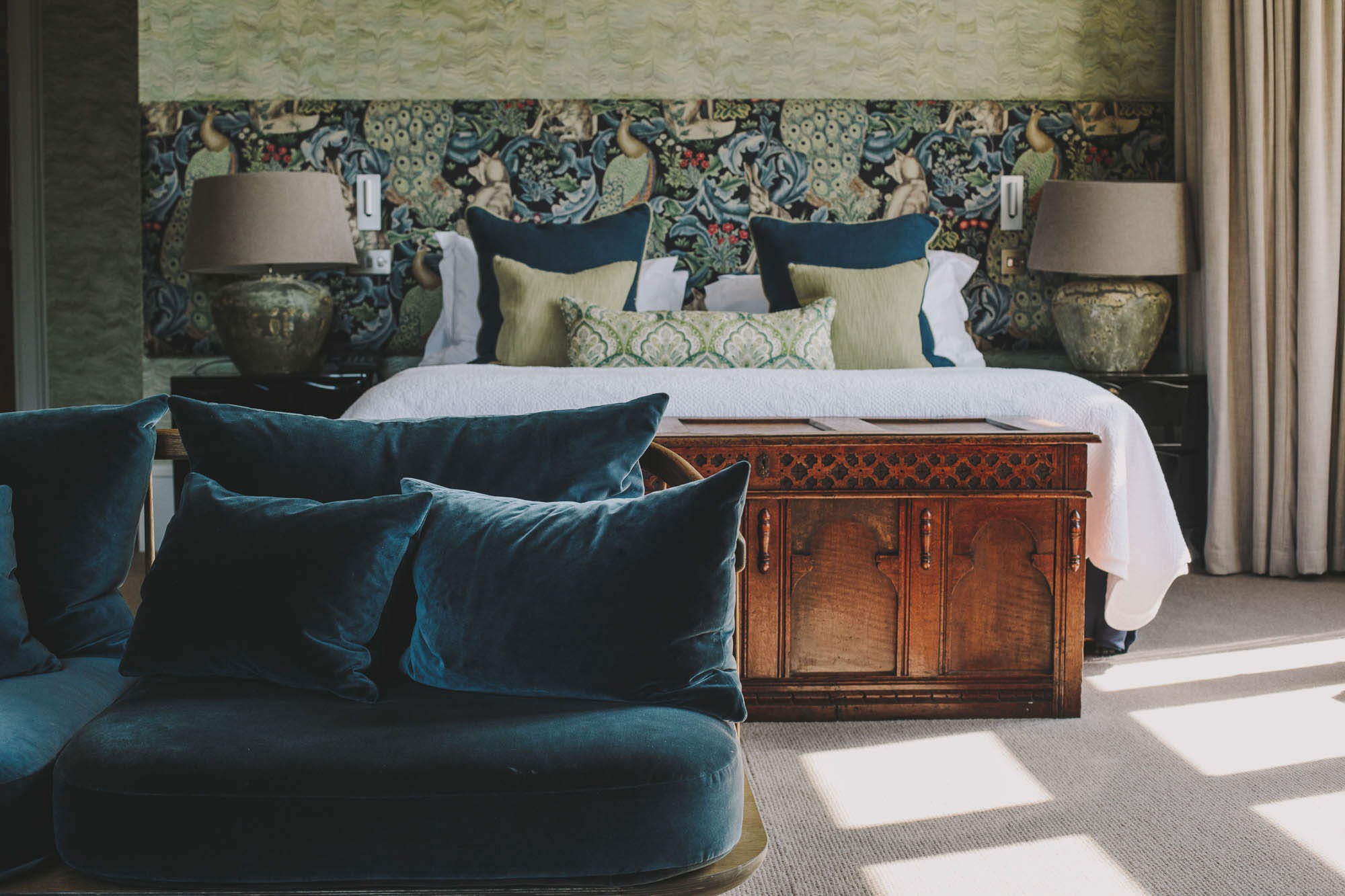

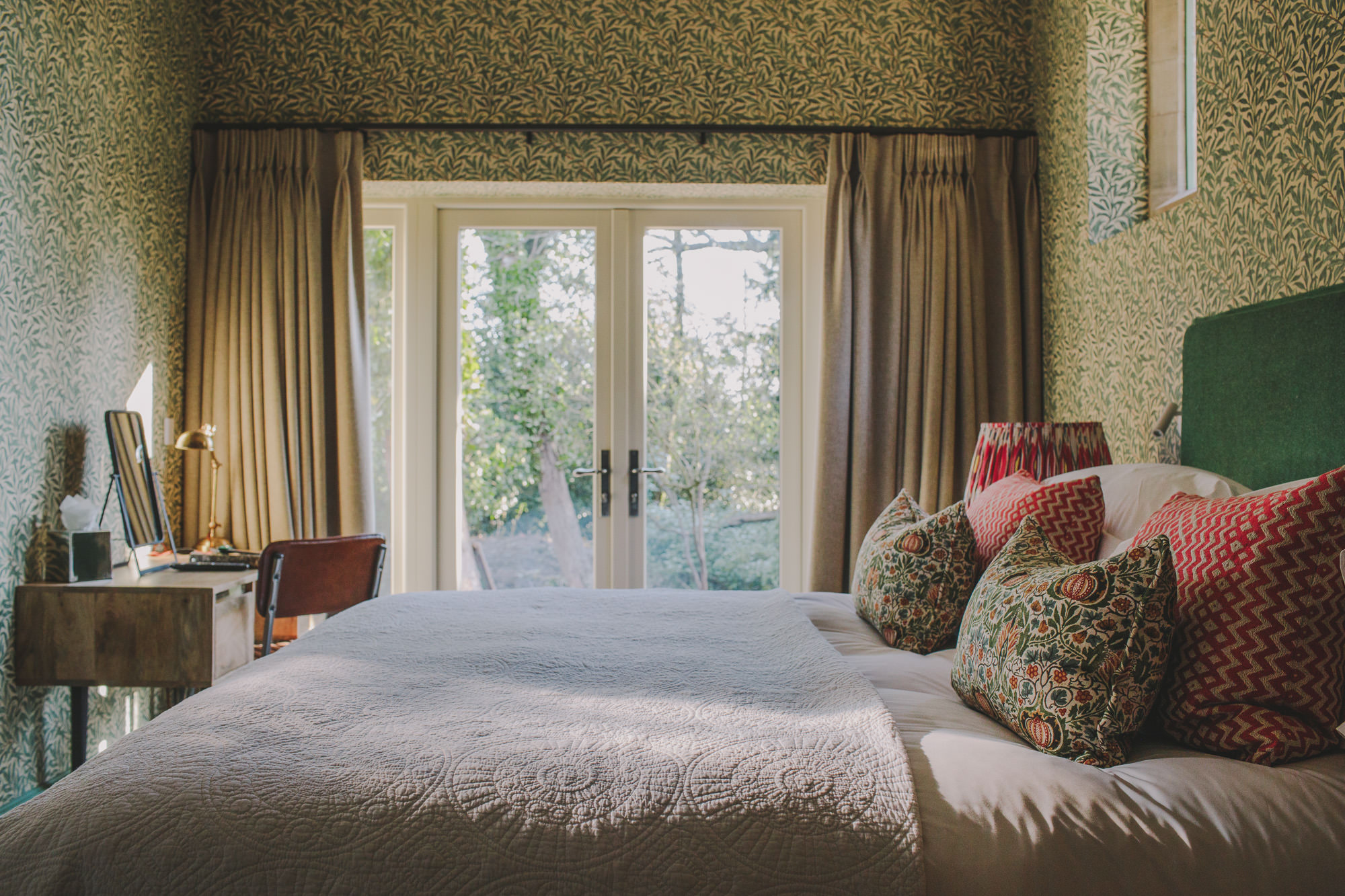
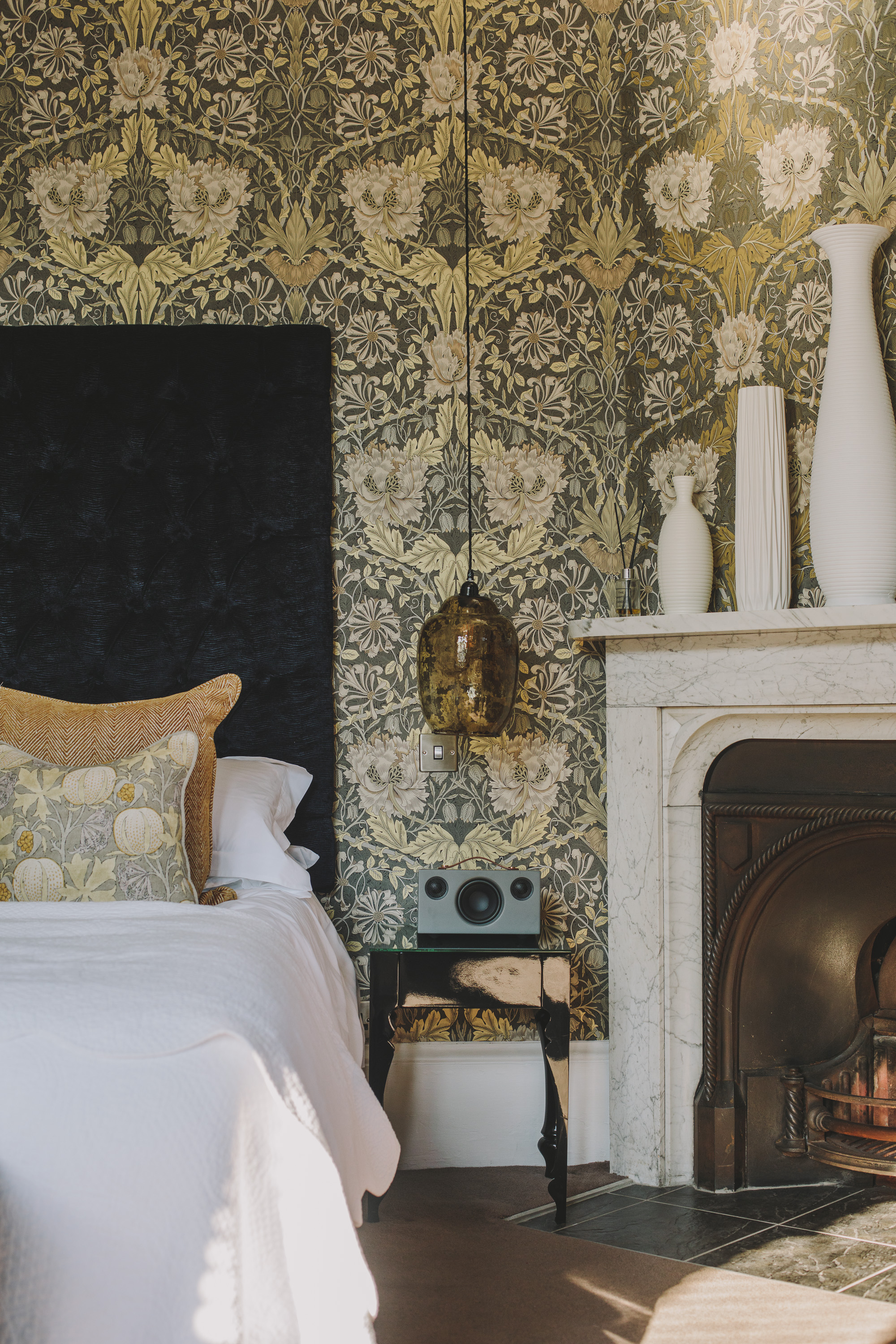
In Meet the Maker, a regular series of events hosted on the premises of Hampton Manor, guests are introduced to the chefs, gardeners, crafts(wo)men, and bakers that contribute to making the hotel one of a kind. The atmosphere is relaxed, intimate, inspiring, convivial. Much like you would expect of a reunion with friends you have waited for too long for. "The Maker's Table is made of Bog Oak, a rarer material for many makers, dredged up from bogs, preserved from decay for hundreds of years," Fjona says of the unruly wooden slab that acts as the initiative's main stage, brought to life by Rothschild & Bickers' lights. "We made it kitchen rather than bar height because we wanted the feel of a house party — the conversation always ends up around the kitchen island in a home!" The destination also offers cooking, baking, and gardening workshops, each conceived to share the passion for great food, sustainable agricultural practices, and creativity that drives the estate forward with its temporary residents.
The Livingetc newsletters are your inside source for what’s shaping interiors now - and what’s next. Discover trend forecasts, smart style ideas, and curated shopping inspiration that brings design to life. Subscribe today and stay ahead of the curve.
If the Manor House is "the mothership, a big, warm hug that won't bat an eyelid if you curl up with your feet on the sofas (shoes off first, darling)," Hampton Manor's Creative Director recounts, "the Walled Garden is the gregarious uncle. The center of our resident experiences, and also open to the neighbourhood, it is a place where we tell all our stories and tease you into curiosity." The leafy spot is flanked at either end by gastronomic destinations.
At its front, you'll find Kynd, the exemplification of the stay's farm-to-plate ethos, inaugurated in the old Victorian furnace as an exercise in thoughtful reclamation, with big beams from Manchester locks forming the wall dividers, former horse stable doors giving structure to the bar front, and a big central table obtained from the floorboards of what was once a bank. To the back, rises Grace & Savour, its Michelin-starred, less modern rustic and more sophisticated sister, complete with five biophilic design suites that expand on its tranquil energy and soulful culinary offering. Here, an English answer to Scandinavian interiors and wabi-sabi channels a joyful quietness through Windsor chair-inspired, handmade furniture by ex-violin maker Nigel Briggs, dashes of country floral prints, and "British quirks like bobbin legs, tying down the UK aesthetic but keeping it subtle, like seasoning with salt," Fjona adds.
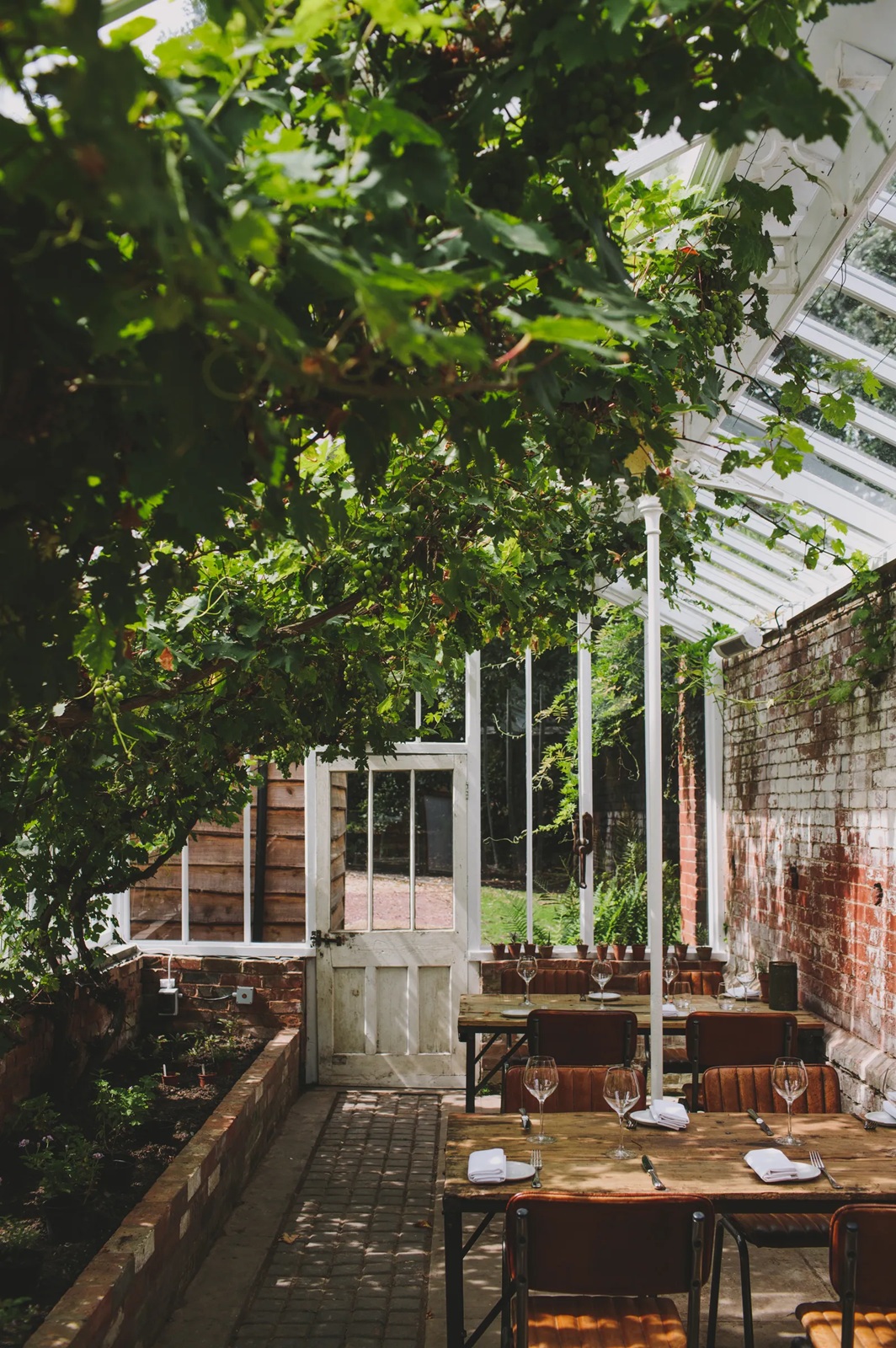
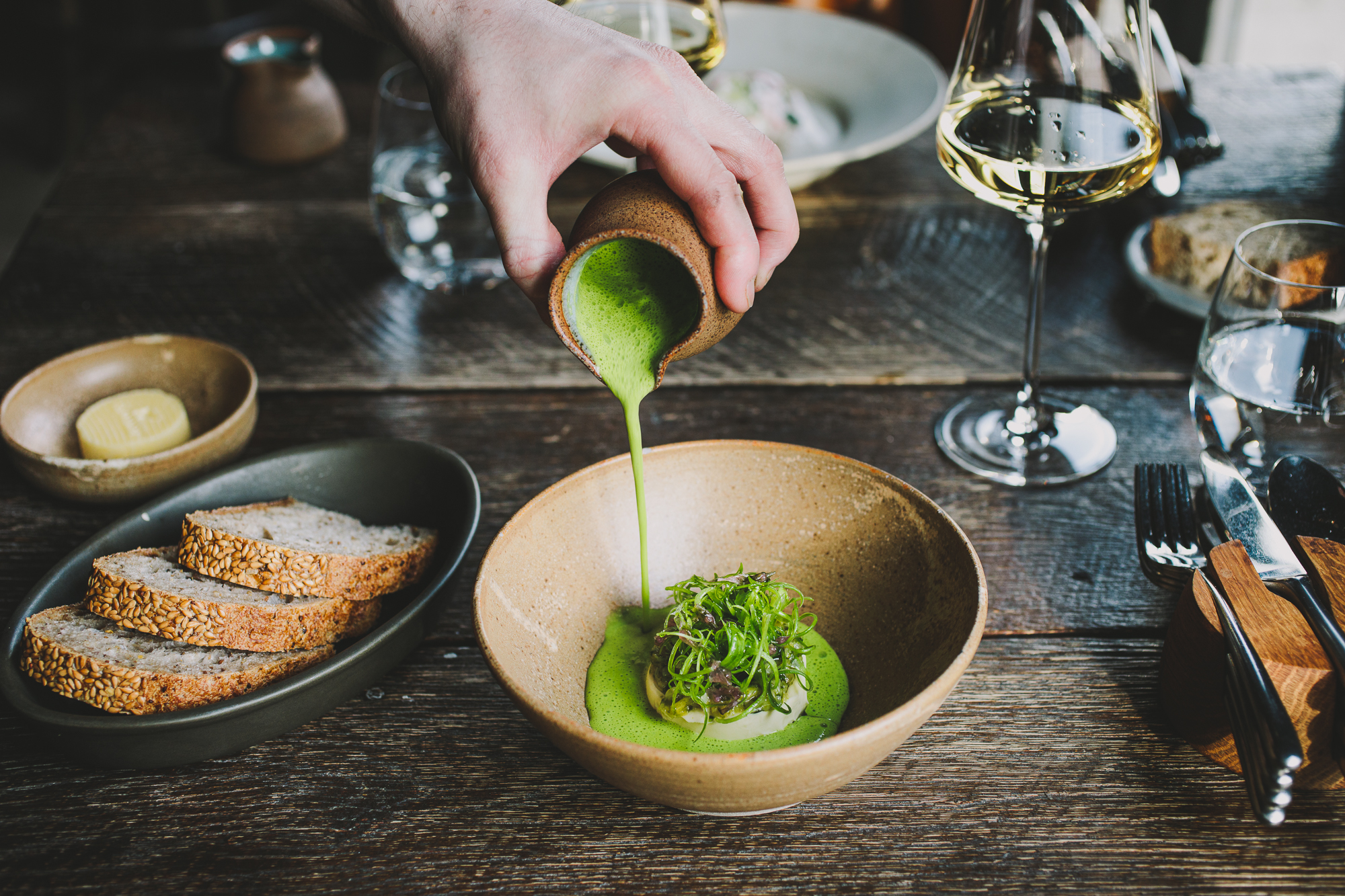
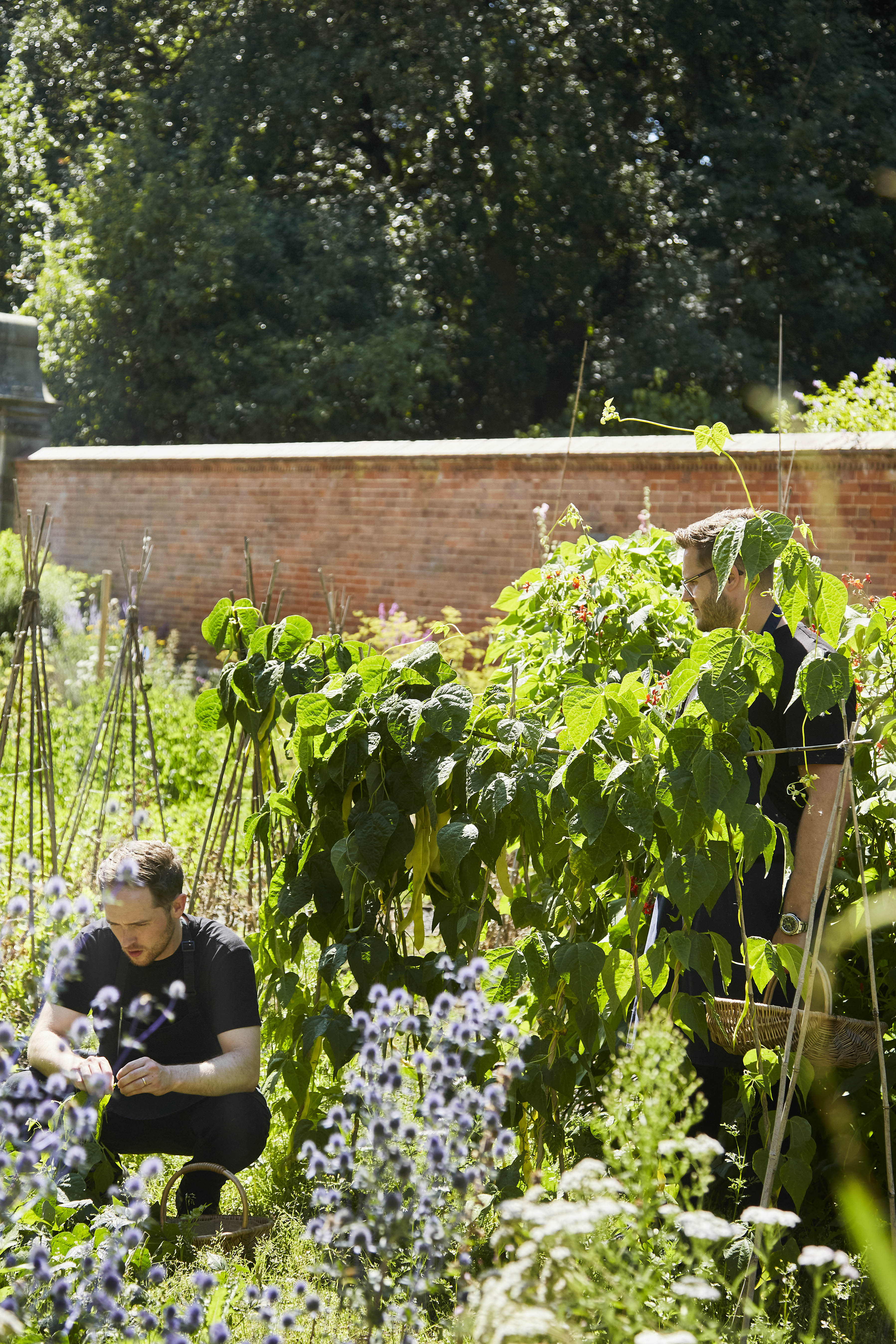
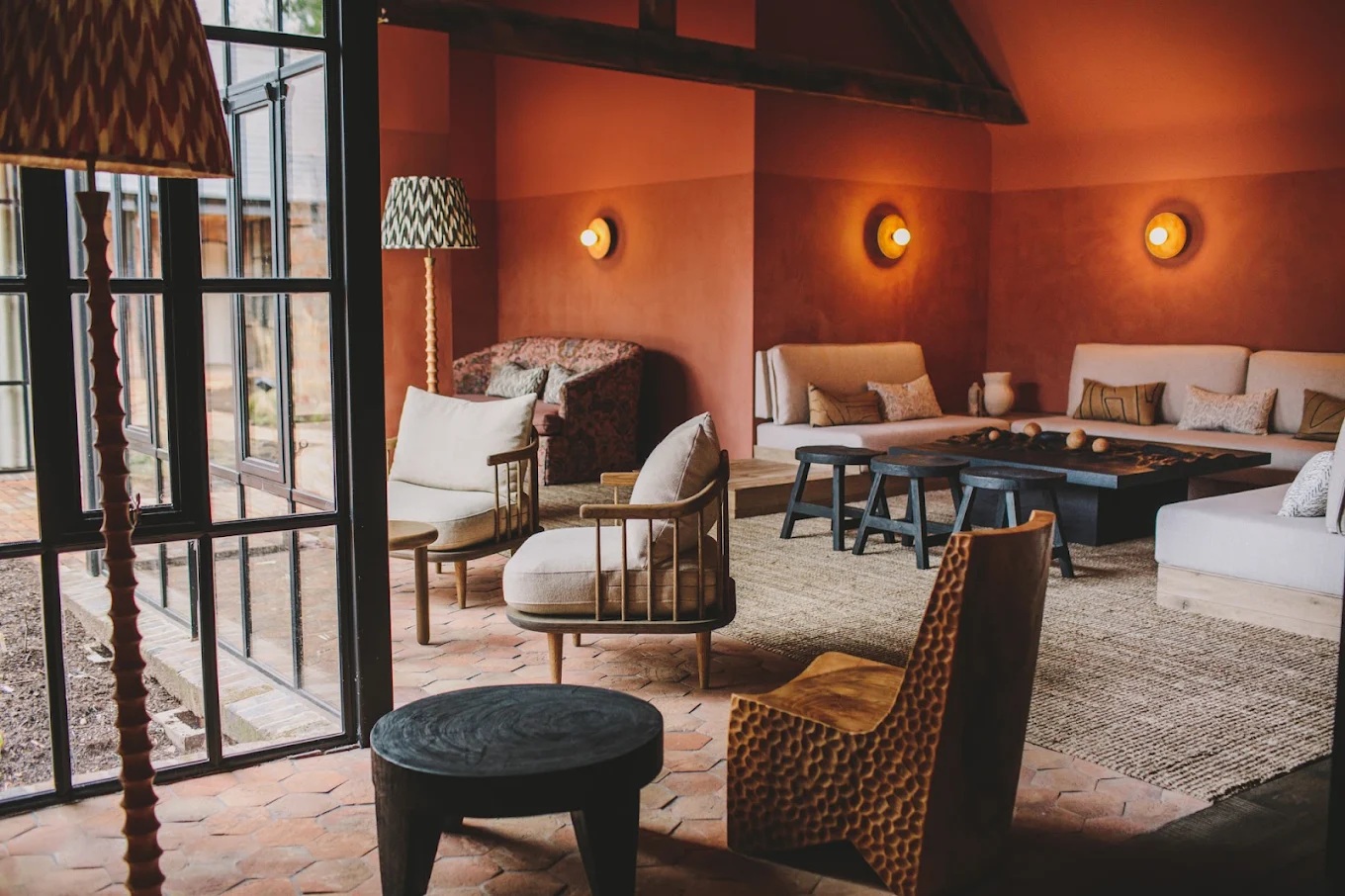
It is a metaphor that gets me thinking about the role that food growing and sharing can play within communities. My overnight weekend stay begins with a dinner at its newest restaurant, where a zingy Cornish crab starter, a melt-in-your-mouth main of line-caught gurnard and heartwarming potato fondant, and an earthy, chocolatey finale capture the eatery's playfully inventive approach to local cuisine. A nuanced, gradual buildup of flavors that causes me to light up, allowing me to temporarily forget about the rest, give in to the cocooning feel of Hampton Manor, and that of the panoramic Robert Peel suite I have checked into. That, in itself, speaks to the hotel's mission.
"Our goal is to plant gardens and build tables that transform the people around them," Fjona says of her hopes for the future of the concept. "One day I'd love to build a walled garden, training restaurant, and design studio in the heart of Birmingham, a city that, despite boasting the most Michelin stars in the UK outside of London, also has one of the highest food poverty rates because of the 'deserts' of access to fresh ingredients in deprived areas, which leads to obesity. Admittedly, there's not much profit in food, but it does have the power to convene and bring people closer together. We want to work out how to use that influence well to support this big conversation for our city."

Gilda Bruno is Livingetc's Lifestyle Editor. Before joining the team, she worked as an Editorial Assistant on the print edition of AnOther Magazine and as a freelance Sub-Editor on the Life & Arts desk of the Financial Times. Between 2020 and today, Gilda's arts and culture writing has appeared in a number of books and publications including Apartamento’s Liguria: Recipes & Wanderings Along the Italian Riviera, Sam Wright’s debut monograph The City of the Sun, The British Journal of Photography, DAZED, Document Journal, Elephant, The Face, Family Style, Foam, Il Giornale dell’Arte, HUCK, Hunger, i-D, PAPER, Re-Edition, VICE, Vogue Italia, and WePresent.